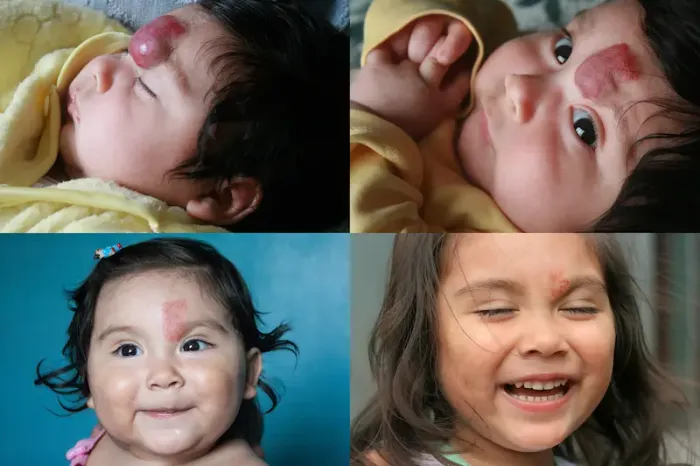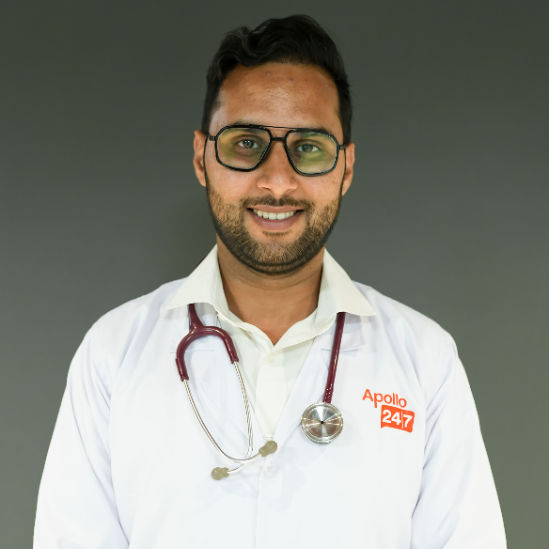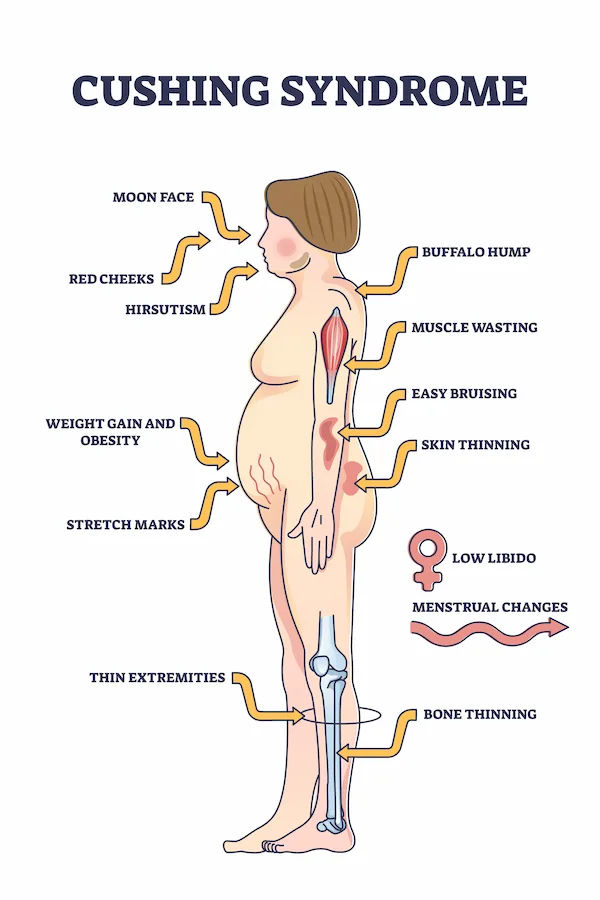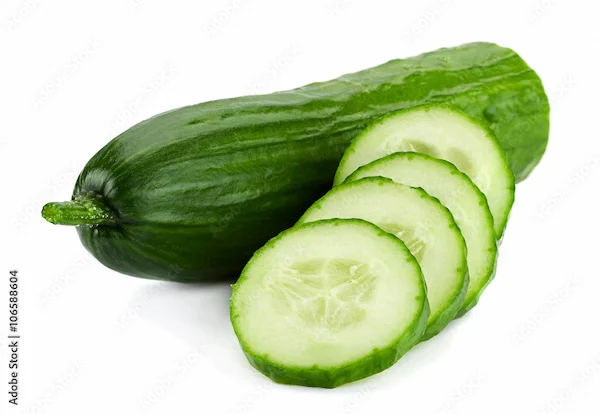Hemangioma Types, Symptoms, Causes and Treatments
Know about the hemangioma types, symptoms, causes and treatment. Learn about the diagnosis and lifestyle tips for hemangioma and more.

Written by Dr. Dhankecha Mayank Dineshbhai
Reviewed by Dr. Shaik Abdul Kalam MD (Physician)
Last updated on 31st Aug, 2025

Introduction
Hemangiomas are common, non-cancerous growths made up of extra blood vessels. While they might sound concerning, most hemangiomas are harmless and often resolve on their own, especially in children. However, understanding their types, symptoms, causes, and treatment options can help you manage them better.
What is a Hemangioma?
A hemangioma is a benign (non-cancerous) tumour that forms due to an abnormal collection of blood vessels. These growths can appear anywhere on the body but are most commonly found on the skin, liver, or spine.
Consult a General Practitioner for Personalised Advice
Types of Hemangiomas
Hemangiomas are classified into different types based on their location and appearance:
1. Infantile Hemangioma (Strawberry Hemangioma)
• Most common in infants, appearing shortly after birth.
• Usually grows rapidly in the first few months and then slowly fades over time.
• Often appears as a bright red, raised patch on the skin.
2. Congenital Hemangioma
• Present at birth and does not grow further.
• It can be either rapidly involuting (shrinking quickly) or non-involuting (not shrinking).
3. Capillary Hemangioma
• Made up of small blood vessels (capillaries).
• Often found on the skin, appearing as red or purple spots.
4. Cavernous Hemangioma
• Larger, deeper blood vessels are involved.
• It may appear as a bluish swelling under the skin.
5. Liver Hemangioma
• It occurs in the liver and is usually harmless.
• Often discovered incidentally during imaging tests.
6. Spinal Hemangioma
• Found in the bones of the spine.
• Rarely causes symptoms, but may lead to pain if it grows large.
Symptoms of Hemangioma
Most hemangiomas do not cause symptoms, but when they do, they may include:
Skin Hemangiomas:
• Red, raised, or lumpy patches on the skin.
• May bleed or ulcerate if injured.
Liver Hemangiomas:
• Usually asymptomatic, but can cause discomfort if large.
• Rarely, it may lead to nausea or abdominal pain.
Spinal Hemangiomas:
• May cause back pain or nerve compression in rare cases.
If a hemangioma is in a sensitive area (like near the eyes, nose, or mouth), it may interfere with vision, breathing, or feeding, requiring medical attention.
What Causes Hemangiomas?
The exact cause of hemangiomas is not fully understood, but some factors may contribute:
• Genetic Factors: Some hemangiomas may run in families.
• Hormonal Changes: Pregnancy or estrogen therapy may influence liver hemangiomas.
• Blood Vessel Abnormalities: Overgrowth of blood vessels during fetal development.
Infantile hemangiomas are more common in:
• Premature babies
• Girls
• Twins or multiple births
Diagnosis of Hemangioma
Most hemangiomas are diagnosed based on their appearance. However, if deeper tissues are involved, doctors may recommend:
• Ultrasound – For superficial hemangiomas.
• MRI or CT Scan – For liver or spinal hemangiomas.
• Biopsy (Rarely Needed) – To confirm diagnosis if cancer is suspected.
Treatment Options for Hemangioma
Most hemangiomas do not require treatment and fade on their own. However, if they cause complications, the following options are available:
1. Observation (Wait-and-Watch Approach)
• Many infantile hemangiomas shrink over time without treatment.
2. Medications
• Beta-Blockers (Propranolol) – Often used for large or problematic infantile hemangiomas.
• Corticosteroids – May be injected or taken orally to reduce growth.
3. Laser Therapy
• Helps reduce redness and improve appearance, especially for skin hemangiomas.
4. Surgery
• Rarely needed unless the hemangioma is causing functional problems (e.g., blocking vision).
5. Embolisation (For Liver Hemangiomas)
• A procedure to block blood flow to the hemangioma, shrinking it.
Lifestyle and Home Care Tips
These include:
• Protect the Skin: If the hemangioma is on the skin, avoid injury to prevent bleeding.
• Monitor Growth: Keep track of any changes in size or colour.
• Consult a Doctor if:
1. The hemangioma bleeds frequently.
2. It causes pain or interferes with daily functions.
3. It grows rapidly or changes in appearance.
When to Seek Medical Help?
While most hemangiomas are harmless, consult a doctor if:
• The hemangioma ulcerates or bleeds excessively.
• It affects breathing, vision, or feeding (in infants).
• You notice sudden growth or pain in a liver or spinal hemangioma.
Final Thoughts
Hemangiomas are usually harmless and often resolve without treatment. However, understanding their types, symptoms, and when to seek medical advice can help you manage them effectively. If you have any concerns, don’t hesitate to reach out to a healthcare provider for guidance.
Consult a General Practitioner for Personalised Advice
Consult a General Practitioner for Personalised Advice
Dr. Gaddam Manoj
General Practitioner
1 Years • MBBS
Hyderabad
Aaradhya clinic, Hyderabad

Dr. Anand Ravi
General Physician
2 Years • MBBS
Bengaluru
PRESTIGE SHANTHINIKETAN - SOCIETY CLINIC, Bengaluru

Dr Syed Mateen Pasha
General Physician
2 Years • MBBS
Bengaluru
PRESTIGE SHANTHINIKETAN - SOCIETY CLINIC, Bengaluru

Dr. Syed Ismail Ali
General Practitioner
7 Years • MBBS
Hyderabad
Apollo 24|7 Clinic, Hyderabad

Dr. Madhuri Sai Sreepada
General Practitioner
9 Years • MBBS
Hyderabad
BRIGHT SMILES MEDICARE & DENTAL CARE, Hyderabad
Consult a General Practitioner for Personalised Advice
Dr. Gaddam Manoj
General Practitioner
1 Years • MBBS
Hyderabad
Aaradhya clinic, Hyderabad

Dr. Anand Ravi
General Physician
2 Years • MBBS
Bengaluru
PRESTIGE SHANTHINIKETAN - SOCIETY CLINIC, Bengaluru

Dr Syed Mateen Pasha
General Physician
2 Years • MBBS
Bengaluru
PRESTIGE SHANTHINIKETAN - SOCIETY CLINIC, Bengaluru

Dr. Syed Ismail Ali
General Practitioner
7 Years • MBBS
Hyderabad
Apollo 24|7 Clinic, Hyderabad

Dr. Madhuri Sai Sreepada
General Practitioner
9 Years • MBBS
Hyderabad
BRIGHT SMILES MEDICARE & DENTAL CARE, Hyderabad




